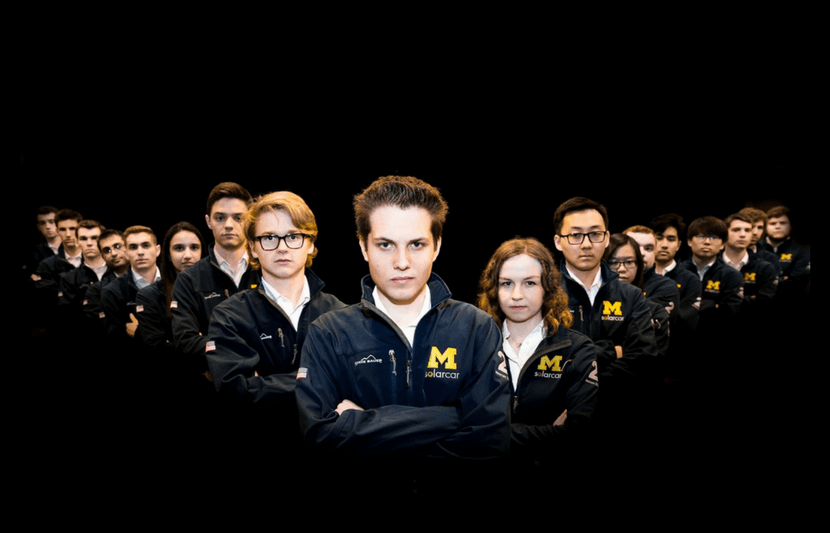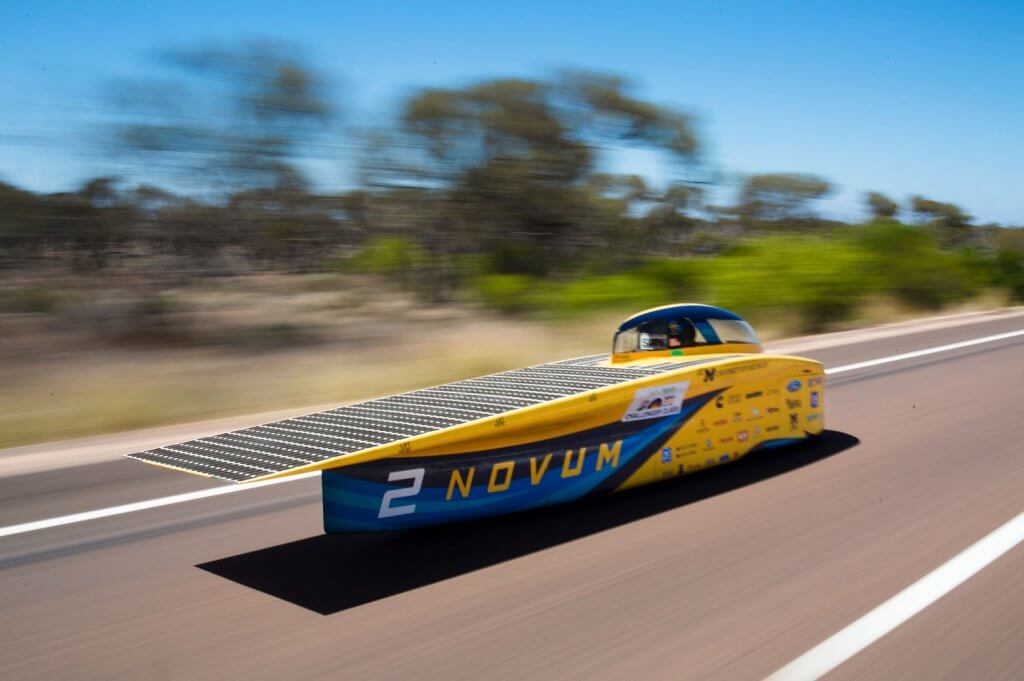The University of Michigan (UM) Solar Car Team finished second in the 2017 Bridgestone World Solar Challenge. This was the team’s most successful outcome yet.
The challenge is a five-day, 1,800-mile race from Australia’s northern territory to Adelaide, Southern Australia’s coastal capital. The event challenges high school, college, and corporate teams from across the world to create solar powered automobiles capable of traveling long distances at high speeds.
The team’s vehicle, Novum, recorded the fastest time out of any American team, but finished 1 hour and 59 minutes behind the Dutch winner from Delft University of Technology.
This is the fastest time UM’s Solar Car Team has recorded in its 27-year history. As the reigning North American champions, UM’s team is accustomed to success. On a global scale, however, the squad had finished in third place five times, but never higher.
The team’s second-place finish is a significant accomplishment because it broke what team members and alumni had been calling “the curse of the third.”
The UM team’s most recent vehicle defies traditional designs for solar cars. The team took a chance this year by constructing Novum as a small and skinny car, thus improving aerodynamics. The typical car designs take more of a catamaran shape.
Neil Dasgupta, the team’s faculty adviser and an assistant professor of mechanical engineering at UM, believes that Novum has now set the standard for future solar cars.
“We took a chance on going with a small car, and we’re going to be ahead of the curve for years to come because of that,” Dasgupta said in a statement. “I do believe that as the race continues to evolve, more and more teams will move towards a smaller car design.”
Novum was made 40 percent narrower than previous designs, said junior Andrew Toennies who served as interim engineering director for the Solar Car Team. The team also reduced the car’s frontal area.
Additionally, recent technological advancements helped initiate team strategy.
“Our most recent car designs employ creative packaging of components, exotic and lightweight materials like carbon fiber, and solar cells with some of the highest commercially available efficiencies,” Toennies said. “With all of these changes, Novum is 20 percent more efficient than our previous designs.”
To be successful in this competition, teams need to accurately gauge the weather and adjust race strategies based on the amount of sunlight, wind, and water on the ground.
As a crucial component of this team’s success, junior and lead strategist Alan Li created a machine capable of predicting the weather, which was based on a system the team developed with IBM during the 2015 race.
“What’s important is that we were able to predict the entire day’s average radiation,” Li said in a statement. “It doesn’t matter if we get the energy earlier or later in the day. It’s also important to take every day of the race into consideration — to look ahead. It could be sunny one day and we drive really fast, but if it’s cloudy the next, we wouldn’t have enough energy.”
The team is now preparing Novum to defend its title at the 2018 American Solar Challenge, Toennies said. In this challenge, the team will be traveling from Nebraska to Oregon on the Oregon Trail in an effort to seek its 10th national title.
“After the completion of that race, we will begin design of our next vehicle,” Toennies said.




